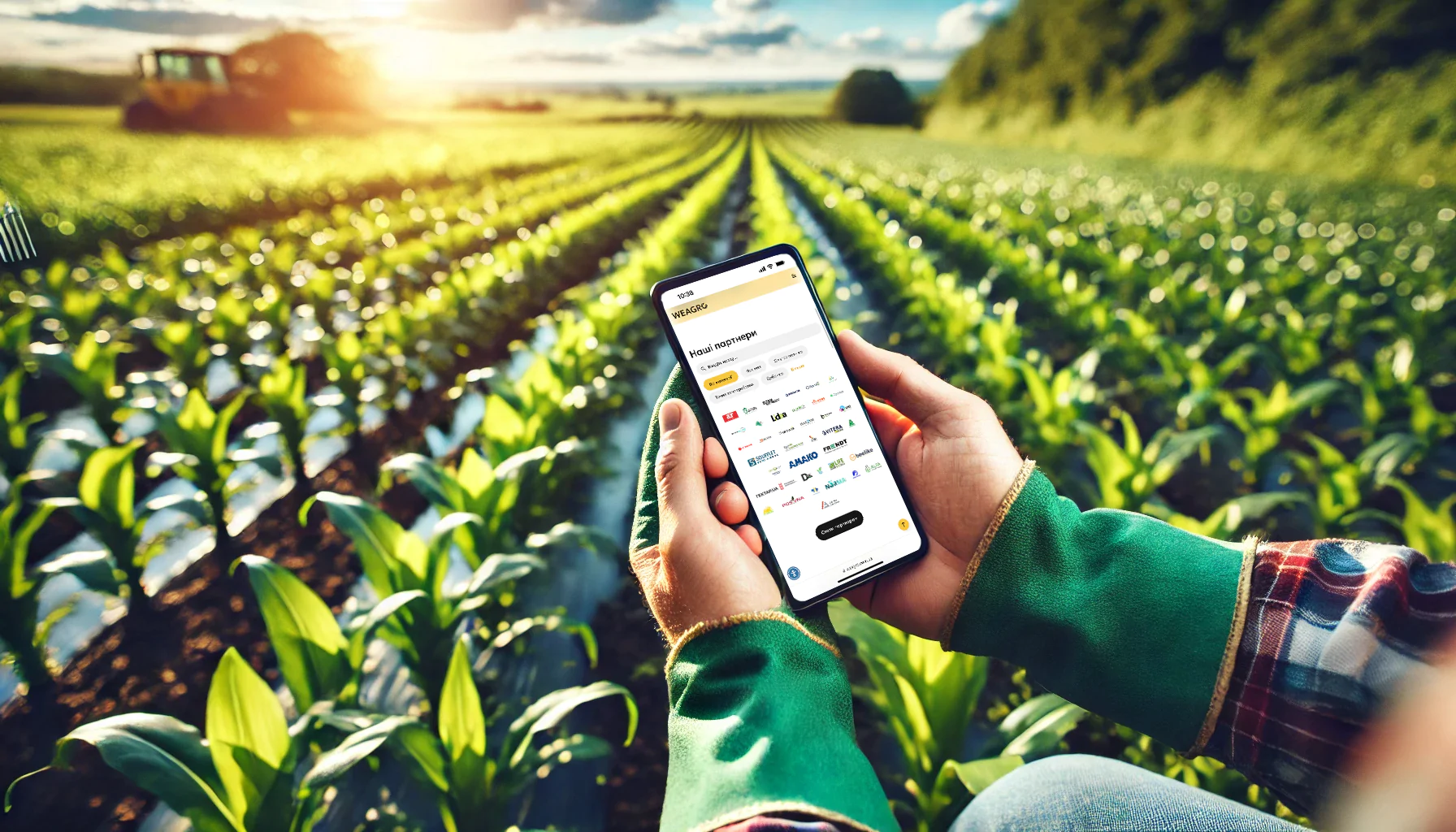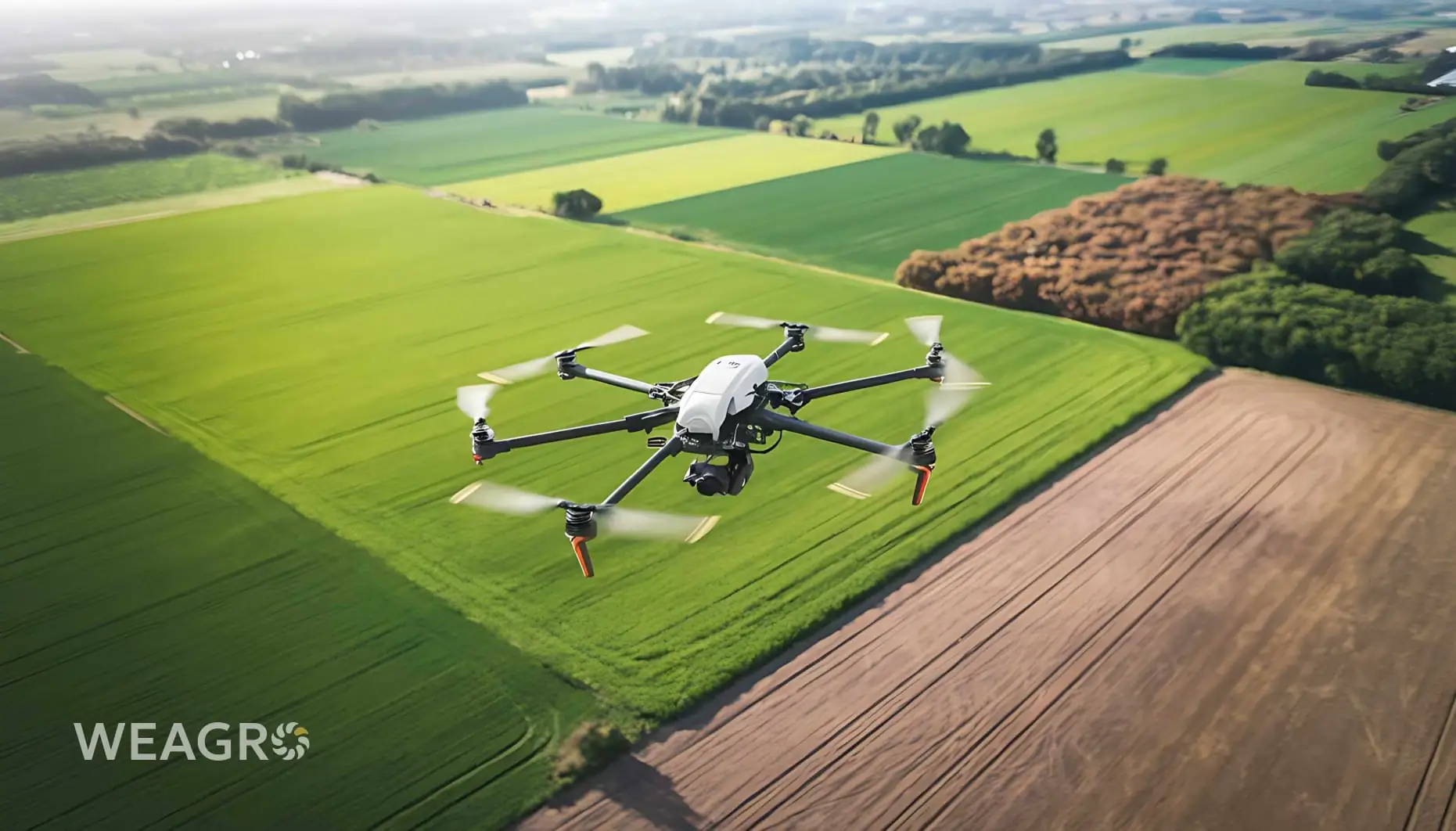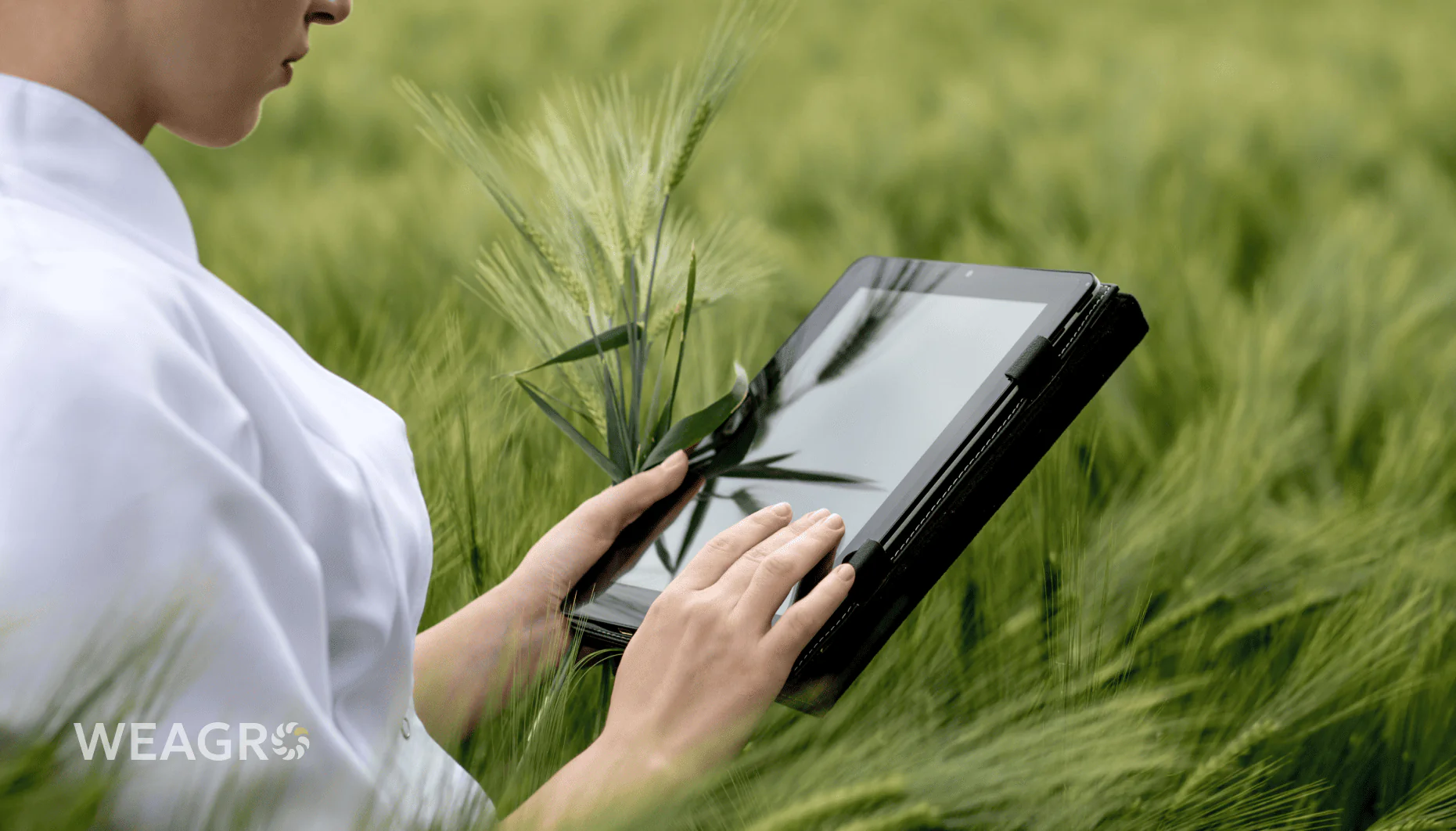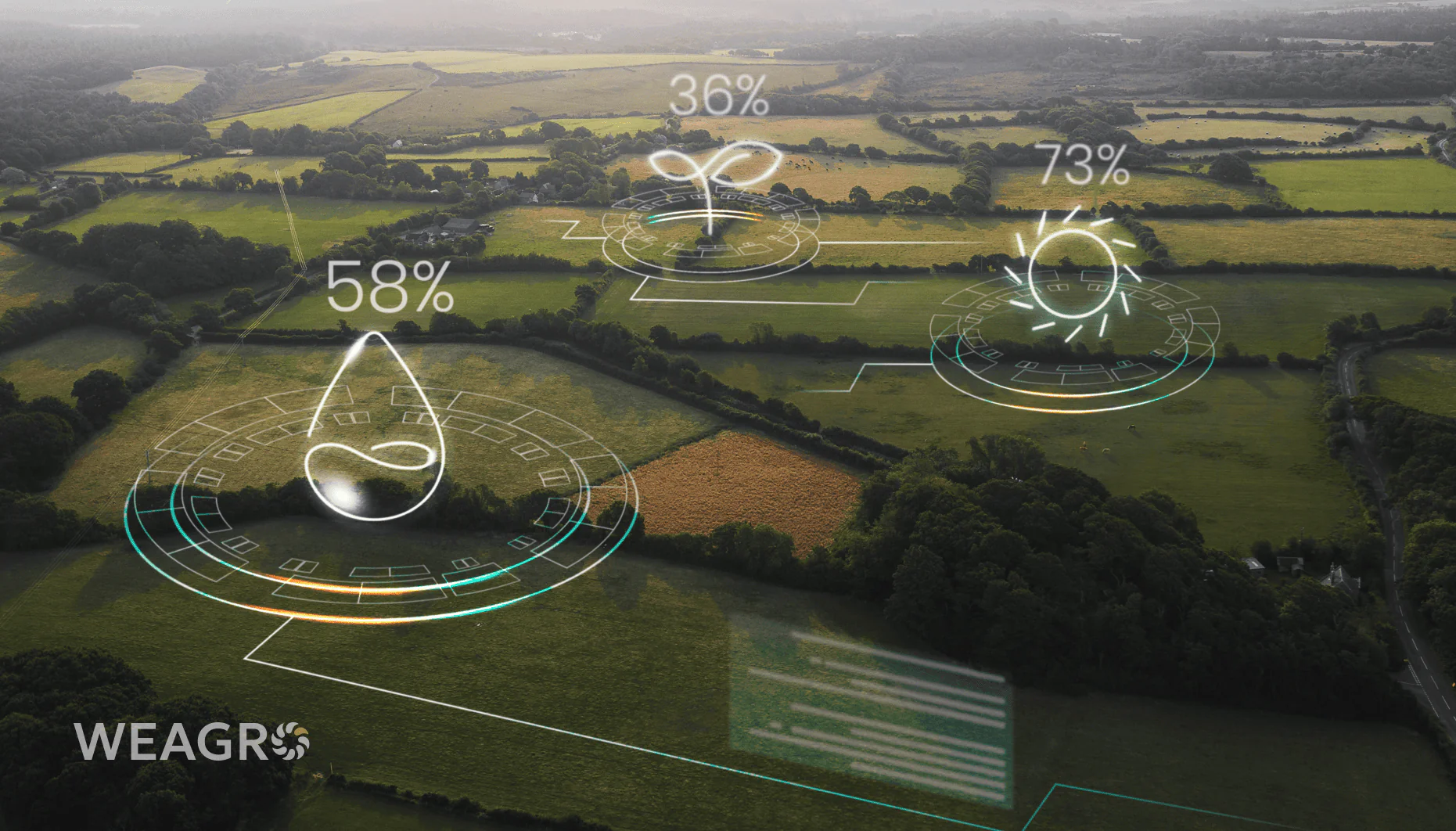Intensive agriculture is a method of farming aimed at maximizing yield using modern technologies, fertilizers, pesticides, and other resources. As the world’s population increases and land resources become limited, the intensification of agriculture is becoming increasingly relevant. In this article, we will discuss the nuances that help increase production efficiency using modern farming methods.
What is Intensive Agriculture

Intensive agriculture is a system of agricultural production aimed at obtaining maximum yield per unit area through the use of advanced technologies, fertilizers, pesticides, irrigation, and other resources. The main goal of such farming is to increase the efficiency of land use and other production factors (labor, capital) to increase the volume of crop and livestock production.
Key characteristics:
- high crop yields and animal productivity;
- widespread use of mineral fertilizers, pesticides, growth regulators, and other agrochemicals;
- use of high-yielding plant varieties and animal breeds;
- mechanization and automation of production processes;
- developed irrigation infrastructure;
- narrow specialization and concentration of production.
Intensive farming is the main source of food in the world. Thanks to the “green revolution” of the second half of the 20th century, which was based on the introduction of technologies (high-yielding grain varieties, mineral fertilizers, pesticides, irrigation), it was possible to significantly increase food production and prevent mass hunger in developing countries.
In Ukraine, intensive agriculture has also become widespread. According to the European Parliamentary Research Service, in 2020 the area of agricultural land in Ukraine was 41.3 million hectares – 68.5% of the country’s total area. In crop production, the most common technologies are for growing cereals and oilseeds, sugar beets, potatoes, and vegetables. In animal husbandry, forced methods of poultry meat, pork, and milk production are used.
Read also: Technology of milk and dairy products production in Ukraine
Ukraine is among the world’s leading producers and exporters of agricultural products. In the 2023/2024 marketing year, which ended on June 30, 2024, Ukraine exported 57.5 million tons of grain and oilseed crops. This became possible due to the intensification of agricultural production, the introduction of modern agricultural technologies and plant varieties.
Advantages of Intensive Agriculture
Intensive agriculture provides a number of advantages:
- High yield per unit area. The use of intensive technologies allows obtaining 2-3 times more products per hectare compared to extensive agriculture. This is especially important in conditions of limited land resources and increasing demand for food.
- Ability to meet growing food demand. Agriculture provides food for over 50% of the world’s population. Without intensification of production, humanity would face large-scale hunger and malnutrition.
- Increasing the economic efficiency of agricultural production. High-performance technologies allow reducing the cost of production due to increased yields and animal productivity, resource savings (land, water, labor), and reduction of losses.
- Creation of jobs in the agricultural sector. Intensive agriculture requires more labor input per unit area compared to extensive farming. This contributes to employment growth, especially in labor-surplus regions. The World Bank recognizes that the food system is the largest employer in many developing countries – 1.6 billion people.
Intensive farming creates a steady demand for means of production, which contributes to the development of industries that provide agriculture with necessary resources and services. This leads to a multiplier effect in the economy, GDP growth, and population income growth.
Disadvantages of Intensive Agriculture
Intensive cultivation technology also has a number of disadvantages:
- Depletion and degradation of soils due to excessive exploitation.
- Environmental pollution by pesticides and fertilizers.
- Reduction of biodiversity due to the use of monocultures.
- High dependence on non-renewable resources (fuel, mineral fertilizers).
- Risks to human health due to the accumulation of harmful substances in food products.
Read also: Organic fertilizers: what they are, types and application rates
The online service WEAGRO enables farmers to purchase necessary resources for intensive farming (fertilizers, crop protection products, seeds) in installments, without collateral and excessive documentation. This makes high-productivity technologies more accessible to small and medium-sized agricultural producers. Using our online service, clients can not only increase their business profitability but also reduce environmental impact by transitioning to organic fertilizers and precision farming methods.
The Impact of Intensive Agriculture on the Environment
One of the main problems of intensive agriculture is its negative impact on the environment. Excessive use of mineral fertilizers and pesticides leads to soil, water, and air pollution. Monocultures reduce the biodiversity of agroecosystems.
To minimize environmental risks, it is necessary to implement principles of precision farming, use organic fertilizers, adhere to crop rotation, and create buffer zones around fields.
The WEAGRO service promotes only organic fertilizers, helping to make intensive agriculture more environmentally friendly. Clients can purchase biohumus, manure compost, sapropel, and stubble biodestructors through our service with agricultural installment plans.
Comparison of Intensive and Extensive Agriculture
Intensive and extensive agriculture fundamentally differ in goals, methods, and results. While the first approach focuses on maximizing yield and productivity through high labor and capital inputs per unit area, the second aims to increase production by expanding cultivated areas with minimal investments.
Below are the key differences between the two farming systems:
| Parameter | Intensive agriculture | Extensive agriculture |
| Yield per hectare | High | Low |
| Use of resources (fertilizers, pesticides, fuel) | Intensive | Minimal |
| Production cost | High | Low |
| Labor input per hectare | High | Low |
| Mechanization and automation | Widely used | Poorly developed |
| Production specialization | Narrow | Broad |
| Environmental impact | Significant | Insignificant |
| Dependence on weather conditions | Low | High |
| Share in global food production | Over 90% | Less than 10% |
The table indicates that intensive agriculture provides higher yields and gross harvests, but requires greater resource inputs and exerts strong pressure on ecosystems. Extensive agriculture is less productive and more vulnerable to natural factors, but has a gentler impact on the environment.
Intensive development dominates in world agriculture. According to FAO forecasts, in the period up to 2050, about 90% of the growth in crop production worldwide will be provided by increasing yields and farming intensity, and only 10% by expanding agricultural land.
However, in recent years, there has been growing interest in organic agriculture, which combines elements of intensive and extensive technologies. Organic farming rejects synthetic fertilizers and pesticides, GMOs, growth hormones, and antibiotics, but uses crop rotations, organic fertilizers, biological plant protection methods, and modern machinery. This allows for the production of environmentally friendly products with high added value while preserving natural resources.
According to the “World of Organic Agriculture 2024” report, in 2022 the global area of organic agricultural land will reach 96.7 million hectares, which is a significant increase compared to the 72.3 million hectares mentioned for 2020. The leaders in organic land area are Australia (53 million hectares), India (4.7 million hectares), and Argentina (4.1 million hectares). In Ukraine, 462 thousand hectares (1% of agricultural land) are certified for organic production, and at the end of 2022, there were 462 organic market operators, 380 of which are agricultural producers.
The Role of Modern Technologies in Intensive Agriculture
Modern intensive cultivation technologies play a key role in the development of agriculture. They allow for more efficient use of resources and minimize negative environmental impact. Here are some of them:
- Precision farming (differentiated fertilizer application, satellite crop monitoring). These technologies involve collecting and analyzing detailed information about soil conditions, plants, weather, and other factors on each field section using sensors, satellites, and UAVs. The obtained data is used to optimize all agrotechnical operations (soil cultivation, sowing, fertilizer and pesticide application, irrigation, harvesting) taking into account the spatial heterogeneity of the field.
- Integrated plant protection against pests and diseases. It is based on a combination of chemical, biological, agrotechnical, and other methods of controlling harmful objects, taking into account economic thresholds of harmfulness. It involves constant monitoring of the phytosanitary situation in fields, use of resistant varieties, crop rotations, timely and localized application of pesticides. This allows reducing the pesticide load on agroecosystems, preserving beneficial entomofauna, and improving product quality.
- Drip irrigation and other water-saving technologies. This is a watering method where water is supplied directly to the plant roots through a system of tubes and drippers. It provides precise dosing and uniform distribution of moisture in the soil, eliminates evaporation losses, and saves up to 50% of water compared to sprinkler irrigation.
- Biotechnologies (creation of stress-resistant plant varieties). Genetic engineering and molecular breeding methods allow creating new varieties and hybrids of agricultural crops with specified properties: high yield, resistance to drought, heat, cold, soil salinity, pests, and diseases. Such plants can provide stable yields under unfavorable conditions, which is especially relevant in connection with climate change.
Read also: Precision Farming in Ukraine: Definition and Prospects
Intensive agriculture plays an important role in ensuring food security, but it also carries certain risks for the environment and human health. To minimize negative consequences, it is necessary to implement principles of sustainable agriculture, use modern technologies, and transition to organic production methods.
WEAGRO actively promotes advanced precision farming technologies and helps agricultural producers implement them in their work. We enable farmers to purchase necessary resources for intensive agriculture (fertilizers, plant protection products, seeds) with agricultural installment plans, without collateral and excessive documentation. This makes technologies more accessible to small and medium-sized agricultural producers.
The service operates according to a simple scheme:
- The farmer selects the necessary products from a supplier company connected to the WEAGRO service.
- We conduct scoring of the farm based on 100+ parameters (area, crop structure, credit history) and make a decision on granting installments.
- The farmer receives the goods, and the supplier receives payment from WEAGRO’s financial partner company.
- The farmer repays the installment according to the schedule in their personal account on the service.
This model is beneficial for all participants:
- farmers get quick access to quality resources without bureaucracy and collateral;
- suppliers increase sales and acquire new customers;
- financial companies diversify their credit portfolio and reduce risks.
According to our data, using the service allows suppliers to increase sales by 30%, and farmers to increase production profitability by optimizing costs and increasing yields.









